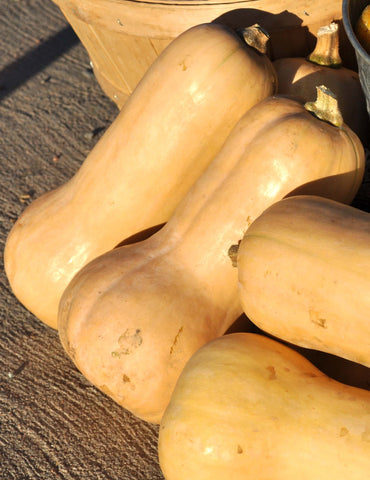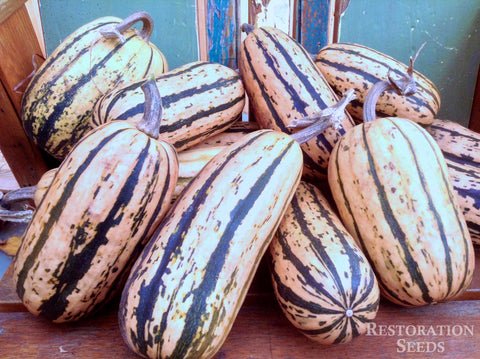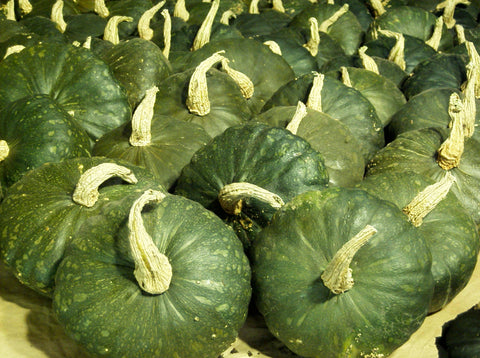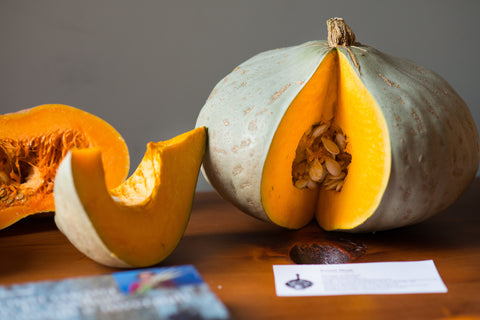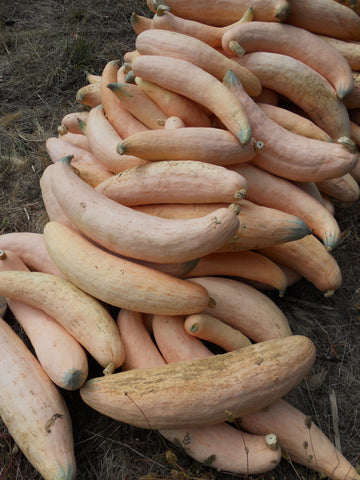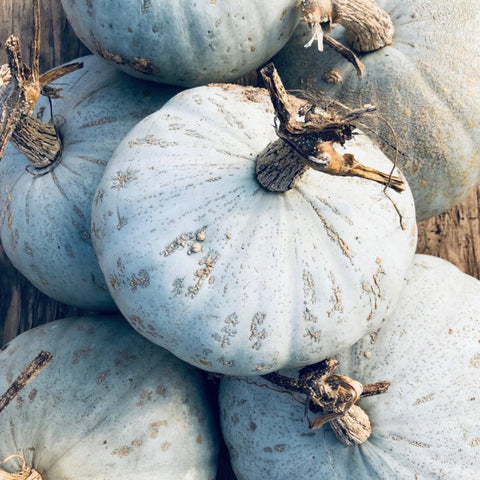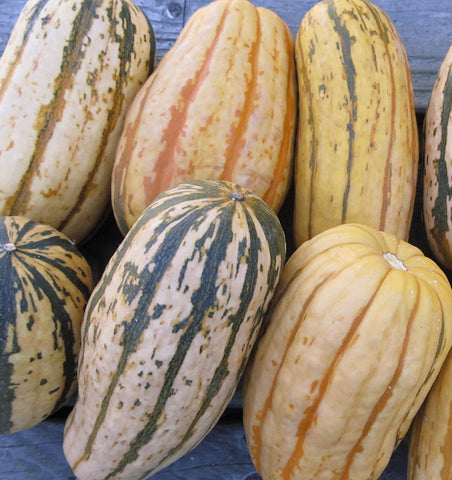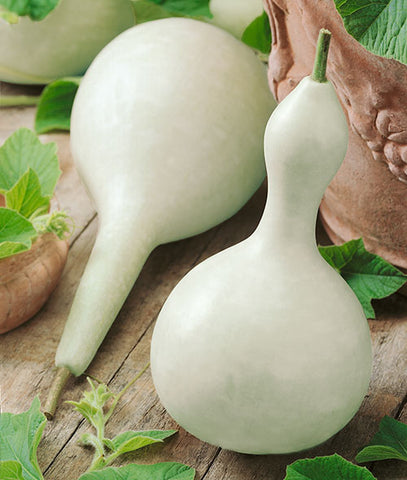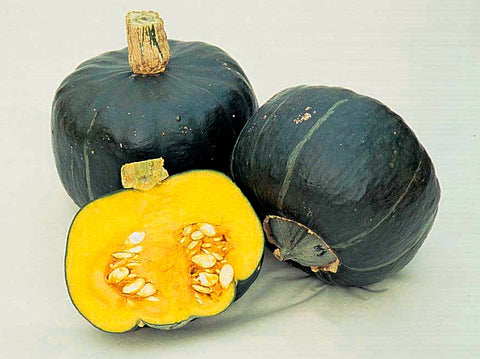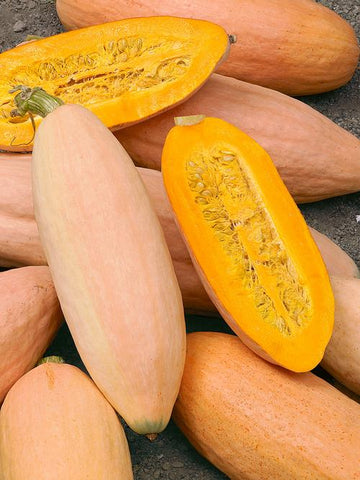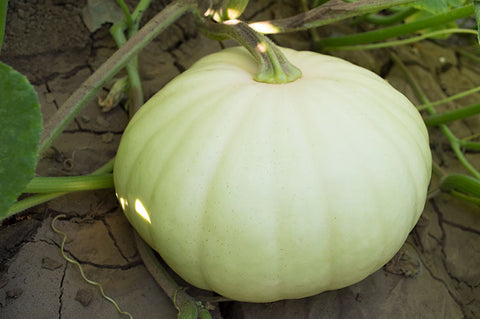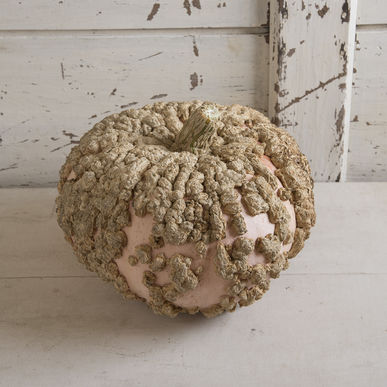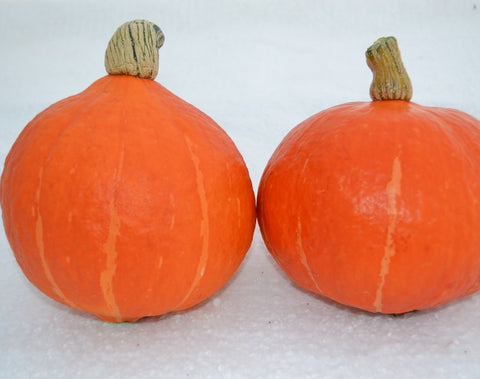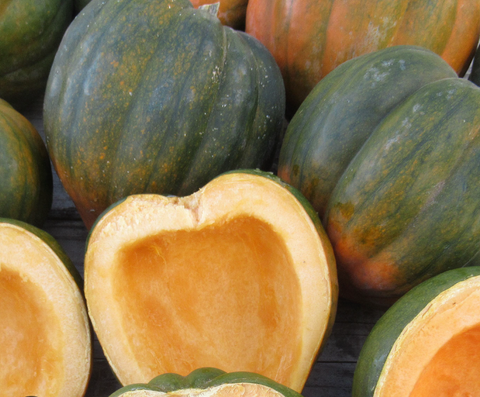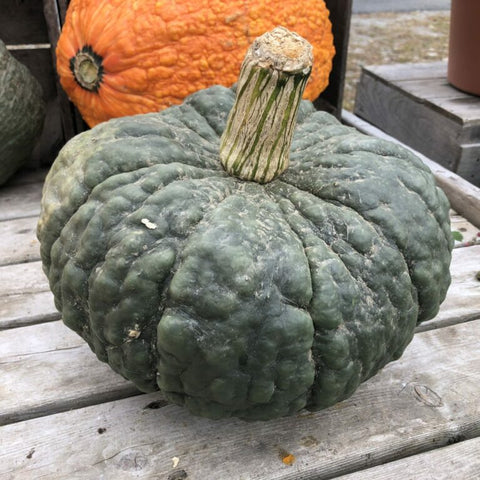SEED CALCULATOR ❌
Number of Plants 0
Weight 0 oz
at 0 seeds per foot

Winter Squash
Various speciesCertification
Color
Size
Heritage
Season
Cucurbita argyrosperma: Adapted to warm climates in the southern U.S. First domesticated in southern Mexico by native peoples, especially the Tohono O’odham. Native Americans planted squash in the Three Sisters Guild with beans and corn. Corn as a trellis for beans, beans to fix nitrogen in the soil and squash to suppress weeds as a border to neighbors crop’s.
C. maxima: The center of diversity is the temperate zone of the Andean region of northern South America from the wild subspecies andreana over 4000 years ago. Originally cultivated for their edible seed. Cucurbita maxima varieties include banana, buttercup, hubbard, winter marrow and turban. By the American revolution, the species was cultivated by native American tribes throughout the present-day United States. The second most widely grown squash species and the most nutritionally significant for their vitamin A and nutraceutical content.
C. moschata: Originated in either Central America or northern South America. Originally cultivated for their edible seed. Moschata varieties are generally more tolerant of hot humid climates and more disease resistant than maxima and pepo. Cucurbita moschata varieties include butternut, cheese, golden cushaw and many pumpkins.
C. pepo: There are two centers of this species that occurred independently of each other. The first (C. pepo subsp. pepo) occurred in southern Mexico about 10,000 years ago. The second (C. pepo subsp. ovifera) in what is now the southeastern U.S. about 4,000 years ago. Originally cultivated for their edible seed. Cucurbita pepo varieties includes acorn, delicata, pattypan, spaghetti, sweet dumpling, yellow crookneck, zucchini and some pumpkin varities. Zucchini was cultivated in Italy as a hybrid from the cucumber. Zucca is the Italian word for squash. Delicious winter squash recipes.
Companions: corn, sunflowers, radishes, nasturtiums
Inhibitors: potatoes

-
Price List
Cucurbita argyrosperma: Adapted to warm climates in the southern U.S. First domesticated in southern Mexico by native peoples, especially the Tohono O’odham. Native Americans planted squash in the Three Sisters Guild with beans and corn. Corn as a trellis for beans, beans to fix nitrogen in the soil and squash to suppress weeds as a border to neighbors crop’s.
C. maxima: The center of diversity is the temperate zone of the Andean region of northern South America from the wild subspecies andreana over 4000 years ago. Originally cultivated for their edible seed. Cucurbita maxima varieties include banana, buttercup, hubbard, winter marrow and turban. By the American revolution, the species was cultivated by native American tribes throughout the present-day United States. The second most widely grown squash species and the most nutritionally significant for their vitamin A and nutraceutical content.
C. moschata: Originated in either Central America or northern South America. Originally cultivated for their edible seed. Moschata varieties are generally more tolerant of hot humid climates and more disease resistant than maxima and pepo. Cucurbita moschata varieties include butternut, cheese, golden cushaw and many pumpkins.
C. pepo: There are two centers of this species that occurred independently of each other. The first (C. pepo subsp. pepo) occurred in southern Mexico about 10,000 years ago. The second (C. pepo subsp. ovifera) in what is now the southeastern U.S. about 4,000 years ago. Originally cultivated for their edible seed. Cucurbita pepo varieties includes acorn, delicata, pattypan, spaghetti, sweet dumpling, yellow crookneck, zucchini and some pumpkin varities. Zucchini was cultivated in Italy as a hybrid from the cucumber. Zucca is the Italian word for squash. Delicious winter squash recipes.
Companions: corn, sunflowers, radishes, nasturtiums
Inhibitors: potatoes
